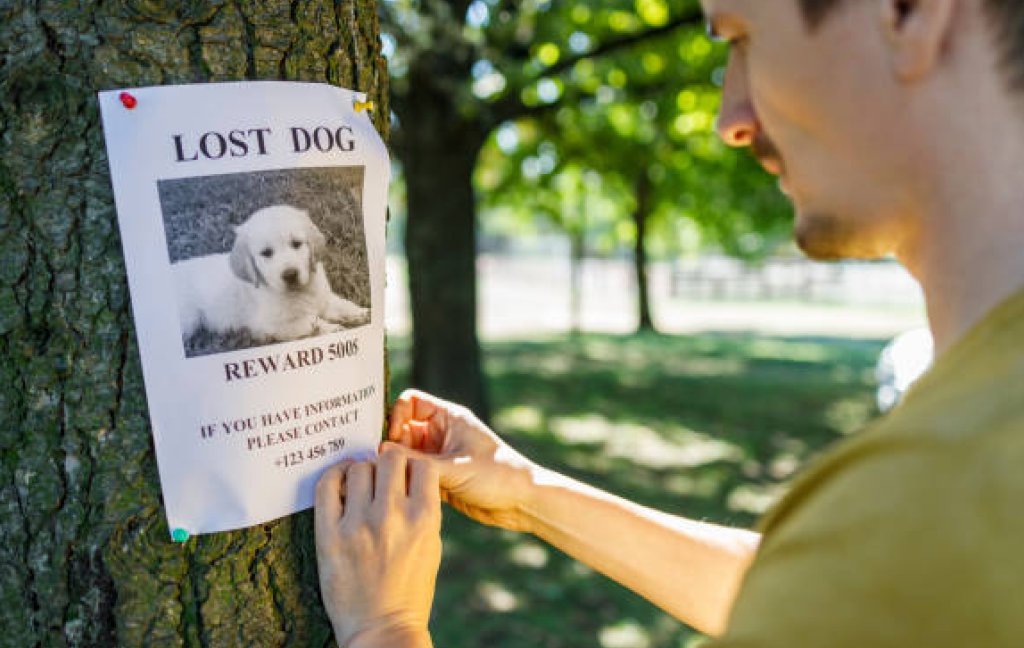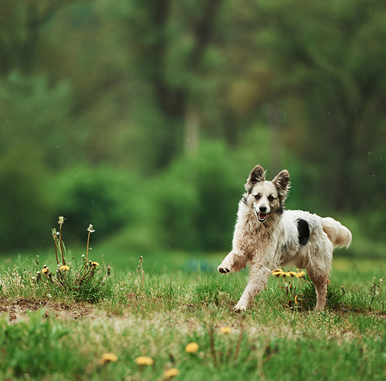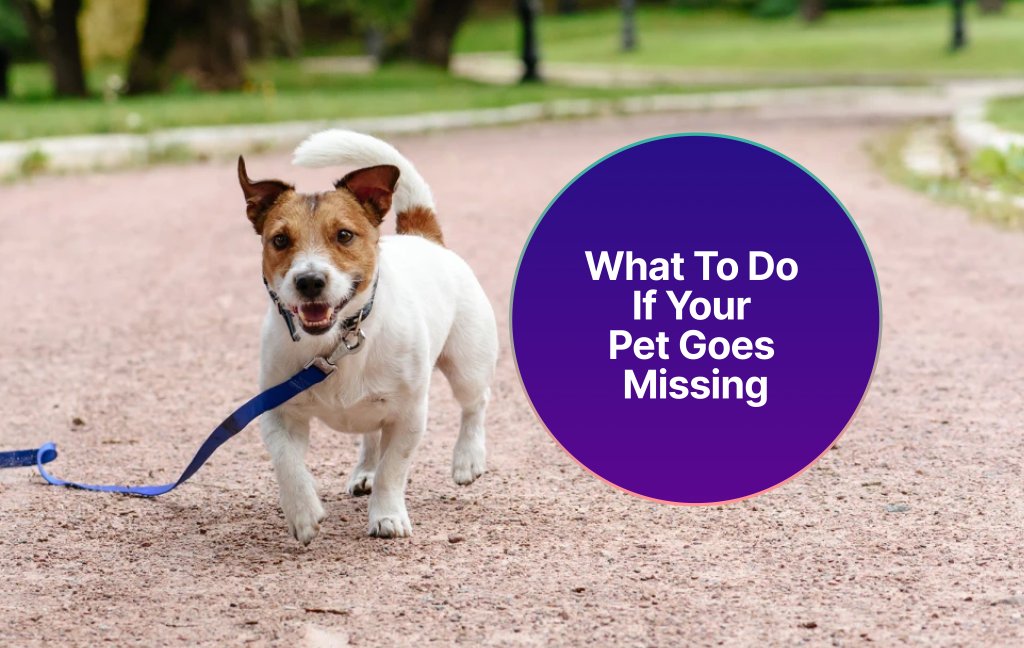There is nothing quite like the panic that sets in when you realise your pet is missing. One minute they were by your side; the next, they had slipped out the front door, wandered from the garden, or vanished during a walk. It’s an overwhelming moment filled with fear, confusion, and a flood of urgent questions.
If you are in this situation right now, you are not alone.Petlog reports that over 25,000 pets went missing in the UK between January 2023 and June 2024. Thankfully, swift action, microchipping, and community support helped reunite 74% of dogs and 62% of cats with their families.
Whether your pet is microchipped or not, the hours immediately after they go missing are important. In this guide, we will walk you through exactly what to do, who to contact, and how to mobilise your local network. It’s designed to give you direction, confidence, and a real plan because every moment counts when it comes to bringing your pet home
Step-by-step guide to take if your cat goes missing

The first and most important thing to remember when your pet goes missing is this: try not to panic. While it’s completely natural to feel frightened or overwhelmed, staying calm increases your chances of reuniting with your pet again. When most pets wander, they are more inclined to stay close to home or hide where they feel it’s familiar and safe.
So the first step in your search is your immediate surroundings.
- Start close to home: Thoroughly search your home, garden, and surrounding area. Look into dark and tight places, some pets are known to hide under furniture, inside sheds and even in bushes. If you are looking for a cat, pay attention to Garages, sheds, under decking, roofs or trees. If you are looking for a dog, some of their common hiding spots are nearby hedges, behind garden fences or shrubs or familiar walking routes, they may try to retrace.
- Use your voice or familiar sounds: Call out your pet’s name as you walk around, you can whistle, or shake a bag of treats or their favourite toys. Dogs are known to respond to tone and rhythm while cats come out of hiding when they feel safe.
Leave a scent trail: Pets use scents to find their way. to make it easier, you can consider placing a familiar item like a blanket or any worn item outside your home or inside you garden to guide them back home.
Inform your people around you

If you have been searching for a while with no luck, then inform people around you and utilise their help. Start by telling your neighbours, go door to door to let them know your pet is missing, and ask them to check their garage, gardens or their cameras.
You can also use this opportunity to hand out a printed “missing pet” flyer if you have one. A missing pet flyer should include;
- A recent clear photo
- The pet’s name and a brief description
- Date, time, and location last seen
- Any notable features for easy recognition(collar colour, microchip tag or limps)
- Pet parent contact number
Other than informing people around you,
- Utilise local groups and community hubs: Some communities are known to have WhatsApp community chats or Facebook groups If your community is one of them, take advantage of the platform to post about your missing pet.
Post at local noticeboards: Use local boards found in vet and pet shops, supermarkets, train stations, or bus stops.
Contact the right organisation
Once you have searched your area and notified your community, but to no avail, the next step is to notify pet-related organisations. These organisations are the first point of contact when anyone finds a stray pet, especially if your pet is microchipped or wearing collar with a tag. Doing this improves the likelihood of reuniting with your pet faster. Here are some organisations you need to contact;
- Your pet’s microchip database provider: If your pet is microchipped, then you must inform the database of your pet’s missing status. Once your pet is flagged as missing, the database will alert shelters and local authorities if your pet is scanned and keep your contact information prioritised in case someone finds your pet.
- Report to the local dog warden (for a missing dog): By UK law, stray dogs must be reported to the local council dog warden. As they are usually the first to pick up wandering dogs.
Register your pet as missing on lost pet websites: Several services that help reunite pets with their owners. Most of these websites allow you to upload a photo, your best known location, and contact information. You can report and find lost pet on Quays. Also, ensure to check the “found pets” section of these websites in case someone has listed your pet as found.
Post on Social media
Using social media can also help you find your missing pet and connect you with other pet parents around you. It could be a simple Facebook post, an Instagram post with a hashtag or an X tweet. When you intend to post on social media, do it fast. This is because social media is the first place pet finders post about a found pet, and the quicker you create the post, the earlier you reunite with your pet. When you post, don’t just post; ensure to target the right platforms and groups.
Here is what to include in your social media post
- Clear, high-quality photo of your pet
- Pet’s name, breed, colour, size, and temperament
- Last known location and time
- Indicate whether the pet is microchipped, wearing a collar or tag
- Your contact number
For a Facebook post, here’s an example of what it should look like
Lost dog – Leeds
Our 3-year-old Cockapoo, Bella, went missing near Armley Park around 7 PM on Saturday. She is wearing a red harness and is microchipped. She’s very nervous, so please don’t chase.
Call/text 07700 123456 if seen.
For Instagram or X
Use local hashtags related to your location example
- #lostdoglondon
- #missingcatmanchester
You can also tag pet accounts or vet clinics in your area
Lastly, while it’s a good initiative to post on social media, it gets better if you can track all your outreach to ensure you do not lose any leads to your missing pet. Keep track of all your outreach by creating a list of where you have posted, the links, and who has responded. However, don’t limit your tracking to only social media; track other media you have also utilised to find your missing pet.
Use technology
Posters and local searches can help find a missing pet, but GPS collars, doorbell cameras, and recovery apps make the search easier. If your pet has a GPS tracker, start by locating them—many devices offer real-time tracking, activity monitoring, and escape alerts.
Offer a reward
If, after 24-72 hours, you are still unable to find your pet, you may want to consider offering a reward for extra motivation to encourage people to look out for your pet. But you also want to be careful while doing this to avoid scammers.
Consider offering a reward if:
- Your pet has been missing for more than 24–48 hours with no leads
- You live in a high-traffic urban area, where strangers are more likely to find your pet
- You are trying to increase the visibility of your missing posters and social posts
- You are worried that someone might be keeping your pet without realising it’s missing
When offering a reward fo a missing pet,
Do:
- Mention the reward on your poster, but don’t specify the amount to avoid exploitation.
- Include it in your Facebook posts (e.g., “Reward available. No questions asked”)
- Say the reward is for safe return only. This discourages scammers who ask for payment before giving you any information.
Don’t:
- Publicly list a large amount of money
- Send any payment or deposit before seeing proof or getting your pet back
- Meet strangers alone or at night – always bring a friend or meet in a public space
The reward you are offering do not necessarily have to be monetary, you could also offer gifts, donations in their name or just publicly thank them.
Reuniting with your pet

Finally reuniting with your missing pet is a moment of relief and gratitude. However, stay mindful because your pet may be disoriented or injured. To ensure your safety, you should follow your reunion.
- Schedule a vet visit: Even if your pet appears healthy, a quick vet check-up is essential to check for bruises, tick exposure, lost weight or dehydration, fleas/mites/worms. You should also inform your vet of your pet’s missing to look out for stress-related issues like: Stomach upset, Kennel cough (for dogs), Stress-related cystitis (for cats).
- Rebuild trust and connection: After your pet has been missing for a while, it’s normal for them to have a change of behaviour. Some may become clingy while some may become aloof. To rebuild the bond you used to share;
- Spend time doing calming activities (stroking, brushing, playing familiar games)
- Use positive reinforcement to reward good behaviour
- Stick to predictable routines to help them feel secure
After reuniting with your pet, don’t forget to thank those who helped and also make a post and inform the people around you, organisations and platforms you utilise during your search.
Preventive measures
Since you have experienced how stressful and frustrating it is to find a missing pet, you will likely want to do everything within your means to prevent it from happening.
Here are some measures to put in place
- Keep your pet microchip details up to date: Microchipping is a legal requirement for dogs in the UK and it’s als important for cats. But be aware that microchipping can only be useful if your details are up to date.
- Use a GPS tracker or smart tracker: These tools let you see your pet’s real-time location on your smartphone and send alerts if they leave a predefined area (geo-fencing).
- Improve home and garden security: It’s no secret that most pets go missing from back gardens, open windows, or unsecured doors. Some even dig under fences or slip through gaps.
- Use ID tags:
- Your dog must wear a collar with a legible ID tag in public spaces. The tag should clearly display your name, address, and (optionally) your mobile number. It should also state whether your dog is microchipped and if they are on medication.
What if you never reunite with your pet?
If despite all your efforts, searches, posting and rewards, you are stil unable to find your pet after several weeks or months. If you find yourself in this situation or you are in this situation, you should;
- Acknowledge the grief: Losing a pet without closure keeps you wondering, hoping and second-guessing. This means you may struggle to move on and feel overwhelmed. You don’t want to blame yourself. So permit yourself to grieve that your bond with your pet is meaningful, no matter how it ended.
- Talk about it: Sometimes, simply sharing your story can ease the pain. You might pen up to family or friends who understand your love for animals or just post a message in the lost pet groups you joined, offering a thank-you to those who helped.
- Leave the door open(if it feels right to you): While some pet owners choose to continue searching indefinitely, others stop actively searching but remain open to a reunion. If you are still looking for your pet, you might: renew microchip information annually, keep your pet’s photo on lost pet databases, and continue checking found pet listings every so often.
When you are ready, you can consider another pet: Losing a pet, especially a missing one can make it difficult to home another pet. But some missing pets owners eventually find comfort in fostering, volunteering, or adopting another animal in need.




